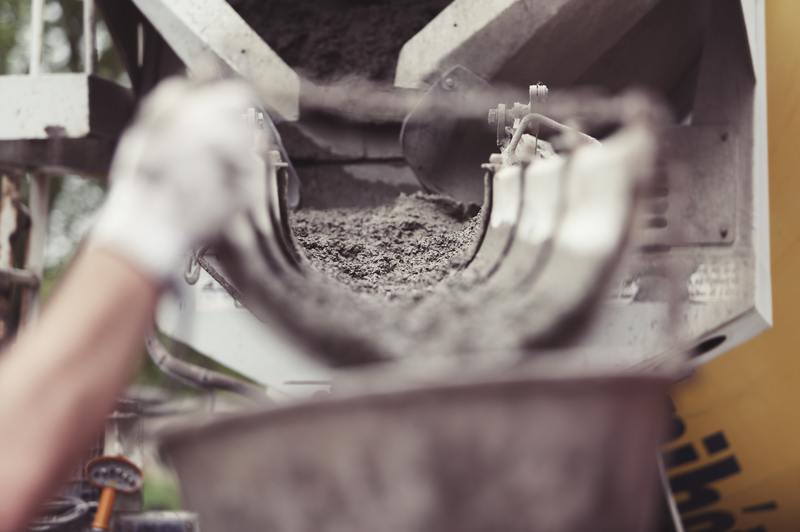Mold is unpleasant to see. Knowing how to kill mold on concrete successfully is necessary to sustain the appearance and stability of the concrete all across your property and other buildings.
It is because mold and mildew growth on exterior concrete surfaces gets worse by moist weather. This type of development is expected in wet or dark locations and doesn’t absorb much sunlight or heat. Concrete, with all of its crevices and openings, makes for an excellent mold colony.

The weed multiplies and rapidly spreads once it takes root, tarnishing your patio or driveway with black or green streaks that are not only unappealing but also pose a possible major serious health issue to you and your family.
Is Mold On Concrete Dangerous?
Mold developing on concrete surfaces in a home’s structure can pose a severe health risk to those who live there. Black mold can create significant health concerns you should address as soon as you discover any of them in the house. To know more, here’s a helpful guide on how to identify black mold you can check out.
Black mold can trigger sensitivities and respiratory problems and irritate the eyes, nose, and throat. If untreated, it can cause considerable property damage, particularly if it extends beyond the concrete structure and into the wood structure.
How Do You Remove Mold From Concrete?
There are a few steps that you can take to help you kill mold on concrete. However, before you do these steps, make sure you wear proper suits and gear to prevent any accident.
Step #1. Select a cleaning method
Select a mold-removal substance to treat the mold, using a mold-killing cleaner, diluted bleach, or a professional cleaner designed exclusively for mold removal. We don’t recommend mixing bleach with anything other than water, as many cleaning chemicals can release highly poisonous gases when combined with bleach. Here’s a guide to help you choose a solution.
Step #2. Set aside all items in the concrete
Any item that comes into contact with the moldy region may get contaminated. Dispose of any disposable items, such as cartons.
Remove any other removable things from the room, such as home furnishings or floor coverings. When managing mold and mildew, it’s essential to take the necessary safety steps to keep yourself and others safe.
Step #3. Use the solution
Apply your selected cleaning product to any noticeable moldy patches on the concrete with a heavy-duty sponge or scrub tool to ensure thorough coverage. Using a stiff brush, scrub the spots thoroughly. Mold-killing detergent should be applied to the locations and washed thoroughly.
Step #4. Let it soak and rinse
If the molds do not appear to be disappearing after a few minutes, let the solution soak for a few more minutes. Then, using the solution, scrape the affected areas until the mold is completely gone.
Rinse it properly and use a hot water pressure sprayer to get the job done as quickly and efficiently as possible. If you do not have water pressure, you can also use an ordinary hose to clean the surface.
Step #5. Inspect
Inspect the area thoroughly for any mold that may have remained after you dry it. When there is still noticeable mold, thoroughly rinse the area and attempt one of the more powerful solutions you haven’t tried yet, such as bleach solution or a specialized cleanser.
Step #6. Deep clean removed items
You should thoroughly clean items you have previously laid aside before being returned to their original location. Upholstered furniture with evident mold will need to be discarded or completely rebuilt by a professional to avoid further contamination.
Here’s a helpful guide on how to remove mold from furniture fabric. You need to replace drenched flooring that has considerable mold growth to prevent any more damage.
How do you stop mold from growing on concrete?
The most effective method of preventing mold growth on concrete is to avoid it from occurring. One process of accomplishing this is to eliminate moisture, which is a necessary component for mold growth.
Start reducing greenery that produces gloomy patches on a driveway or path that never sees the light if you have concrete terraces, driveways, or walks in your yard. Fractures in the concrete, which can absorb moisture and mold growth, should also be addressed. You can use concrete repair products to fill in these gaps.
If this isn’t an option, consider sealing the concrete with a sealer suitable for outdoor use in the affected area. Moisture will not penetrate the pavement or pathway as a result, and you will be able to eliminate the atmosphere necessary for mold growth.
Here’s a helpful article to help you know what type of seal to use. When managing mold and mildew, it’s essential to take the necessary safety steps to keep yourself and others safe.
Conclusion
Knowing how to kill mold on concrete, you should protect your hands with disposable gloves of the proper size to avoid gaps that could allow spores to enter the glove. Ensure that the gloves are removed and disposed of when you finish the work to prevent possible contamination.
